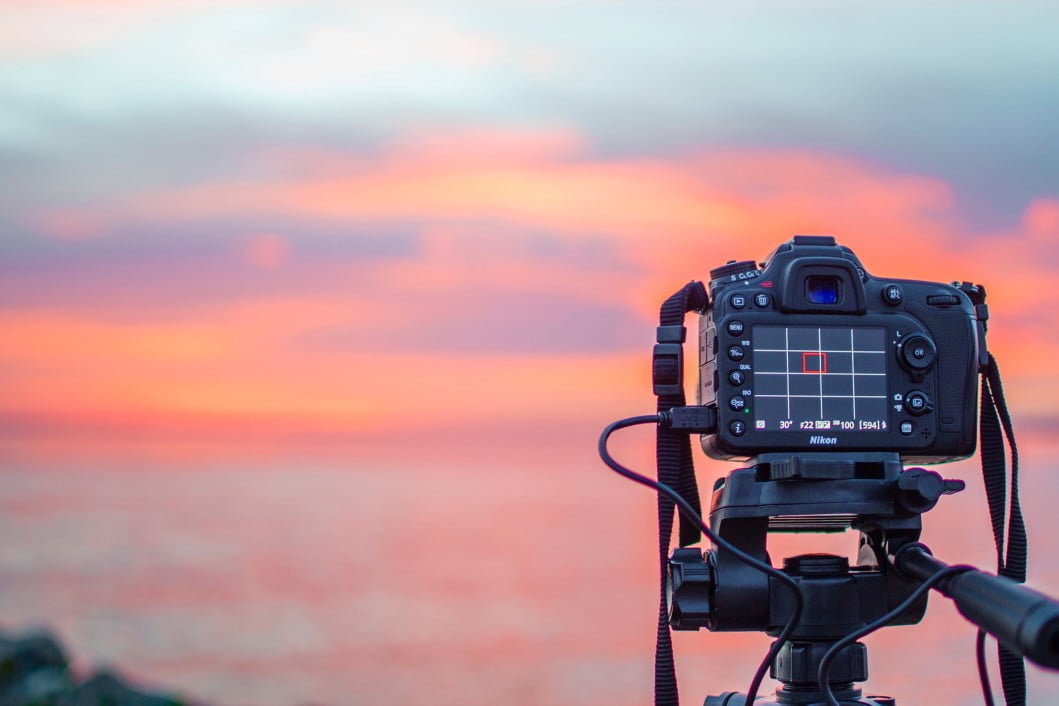If you have been exploring a top-rated digital camera, or even if you are a seasoned vet, you may be wondering about the term “image stabilization”. What is digital camera image stabilization and when do you need it? Keep reading to find out.
KEY TAKEAWAYS:
- Image stabilization should be activated when you are holding a digital camera or if the camera is moving in some way.
- As such, it is not needed when the camera is resting on a tripod or another solid object.
- There are two types of image stabilization commonly found today. These are called Optical Image Stabilization (OIS) and In-Body Image Stabilization (IBIS).
What is Image Stabilization?
When it comes to photography, image stabilization is a technique that helps to reduce shaky footage when a camera is operating in handheld mode. There are two major technologies typically found in digital cameras to manage image stabilization duties. These are called Optical Image Stabilization (OIS) and In-Body Image Stabilization (IBIS).
Insider Tip
Though embedded into camera lenses and not the camera itself, in-lens optical stabilization systems can still typically be controlled via a camera’s settings menu.
Optical Image Stabilization
OIS, otherwise known as in-lens, is an image stabilization system developed by industry giant Fujimax and works to combat camera shake caused by horizontal or vertical movement. This image stabilization system is built into actual camera lenses instead of the camera itself. Generally speaking, OIS includes five varying levels of stability built into the lens element, to assist with different levels of camera shake.
In-Body Image Stabilization
IBIS is the latest and greatest image stabilization standard on mirrorless cameras. Whereas OIS systems account for two axes, IBIS systems account for five, offering an increased level of stabilization. In addition to accounting for horizontal and vertical movement, IBIS systems also account for roll, pitch, and yaw. This increase in axes makes IBIS a great choice for still photography and digital videography, reducing the level of shaky video. These systems typically include five levels of compensation, as with OIS systems, and they are usually built into the image sensors.
Like image stabilization, it is important to also find out what a digital camera photo size is, especially if you will be transferring them to your computer.
When to Use Image Stabilization Features
It’s fairly simple to understand when to activate whatever image stabilization features your camera includes. As a general rule of thumb, if the camera is sitting absolutely motionless, such as when it is placed on a tripod, it will not require image stabilization of any kind. If you are holding the camera, such as in portrait mode, you will likely need to engage an image stabilization system. Image stabilization works with most digital image formats, including raw files, and focal lengths. You should also know what a digital camera autofocus is if you wish to take better photos.
Warning
Image stabilization systems tend to quickly drain battery life, so take that into account when looking to shoot sharp images.
F.A.Q.
Is In-Lens or In-Body stabilization better?
In-lens systems will generally perform better with long focal lengths, though in-body systems will perform better with shorter focal lengths. Additionally, IBIS is more of a battery draw than its In-Lens counterparts.
When not to use image stabilization?
If you are looking to preserve battery power, if you are using a camera’s integrated microphone, or if your camera is affixed to a sturdy tripod, you should not use image stabilization systems.
Do you really need image stabilization?
This is a question only you can answer. How are your photos turning out? If they are shaky, then yeah you probably need an image stabilization system of some kind. If they are sharp and clear, then you likely do not need image stabilization.
STAT: Many companies have their own proprietary image stabilization systems, such as Minolta Anti-Shake, Canon’s Image Stabilizer, and Sony’s Optical SteadyShot, though they all use similar technologies. (source)



































![Best Point and Shoot Camera in [year] ([month] Reviews) 27 Best Point and Shoot Camera in 2025 (December Reviews)](https://www.gadgetreview.dev/wp-content/uploads/Nikon-Coolpix-B500.jpg)
![Best Underwater Camera in [year] ([month] Reviews) 28 Best Underwater Camera in 2025 (December Reviews)](https://www.gadgetreview.dev/wp-content/uploads/best-underwater-camera-image.jpg)
![Best Digital Cameras in [year] ([month] Reviews) 29 Best Digital Cameras in 2025 (December Reviews)](https://www.gadgetreview.dev/wp-content/uploads/what-is-resolution-on-digital-camera-1.jpg)
![Best Digital Camera Docking Stations in [year] 30 Best Digital Camera Docking Stations in 2025](https://www.gadgetreview.dev/wp-content/uploads/best-digital-camera-docking-stations-image.jpg)
![Best Vlogging Camera in [year] ([month] Reviews) 31 Best Vlogging Camera in 2025 (December Reviews)](https://www.gadgetreview.dev/wp-content/uploads/best-vlogging-camera-image.jpg)
![Best Mirrorless Camera in [year] ([month] Reviews) 32 Best Mirrorless Camera in 2025 (December Reviews)](https://www.gadgetreview.dev/wp-content/uploads/best-mirrorless-camera-image.jpg)
![Best GoPro in [year] ([month] Reviews) 33 Best GoPro in 2025 (December Reviews)](https://www.gadgetreview.dev/wp-content/uploads/best-gopro-image.jpg)
![Best Digital Camera Tripods in [year] 34 Best Digital Camera Tripods in 2025](https://www.gadgetreview.dev/wp-content/uploads/best-digital-camera-tripods-image.jpg)
![Best Canon Digital Cameras in [year] 35 Best Canon Digital Cameras in 2025](https://www.gadgetreview.dev/wp-content/uploads/best-canon-digital-cameras-image.jpg)
![Best Polaroid Digital Cameras in [year] 36 Best Polaroid Digital Cameras in 2025](https://www.gadgetreview.dev/wp-content/uploads/best-polaroid-digital-cameras-image.jpg)
![Best Small Digital Camera Cases in [year] 37 Best Small Digital Camera Cases in 2025](https://www.gadgetreview.dev/wp-content/uploads/best-small-digital-camera-case-image.jpg)
![Best Digital Camera USB Cables in [year] 38 Best Digital Camera USB Cables in 2025](https://www.gadgetreview.dev/wp-content/uploads/best-digital-camera-usb-cable-image.jpg)
![Best Digital Camera Bags in [year] 39 Best Digital Camera Bags in 2025](https://www.gadgetreview.dev/wp-content/uploads/best-digital-camera-bag-image.jpg)
![Best Sony Digital Cameras in [year] 40 Best Sony Digital Cameras in 2025](https://www.gadgetreview.dev/wp-content/uploads/best-sony-digital-cameras-image.jpg)
![Best Panasonic Digital Cameras in [year] 41 Best Panasonic Digital Cameras in 2025](https://www.gadgetreview.dev/wp-content/uploads/best-panasonic-digital-cameras-image.jpg)
![Best Digital Camera Accessories in [year] 42 Best Digital Camera Accessories in 2025](https://www.gadgetreview.dev/wp-content/uploads/best-digital-camera-accessories-image.jpg)
![Best Kodak Digital Cameras in [year] 43 Best Kodak Digital Cameras in 2025](https://www.gadgetreview.dev/wp-content/uploads/best-kodak-digital-cameras-images.jpg)
![Best Video Cameras in [year] ([month] Reviews) 44 Best Video Cameras in 2025 (December Reviews)](https://www.gadgetreview.dev/wp-content/uploads/best-video-cameras-image.jpg)
![Best Compact Cameras in [year] 45 Best Compact Cameras in 2025](https://www.gadgetreview.dev/wp-content/uploads/best-compact-camera-image.jpg)
![Best Digital Cameras with Wifi in [year] 46 Best Digital Cameras with Wifi in 2025](https://www.gadgetreview.dev/wp-content/uploads/best-digital-camera-with-wifi-image.jpg)



















